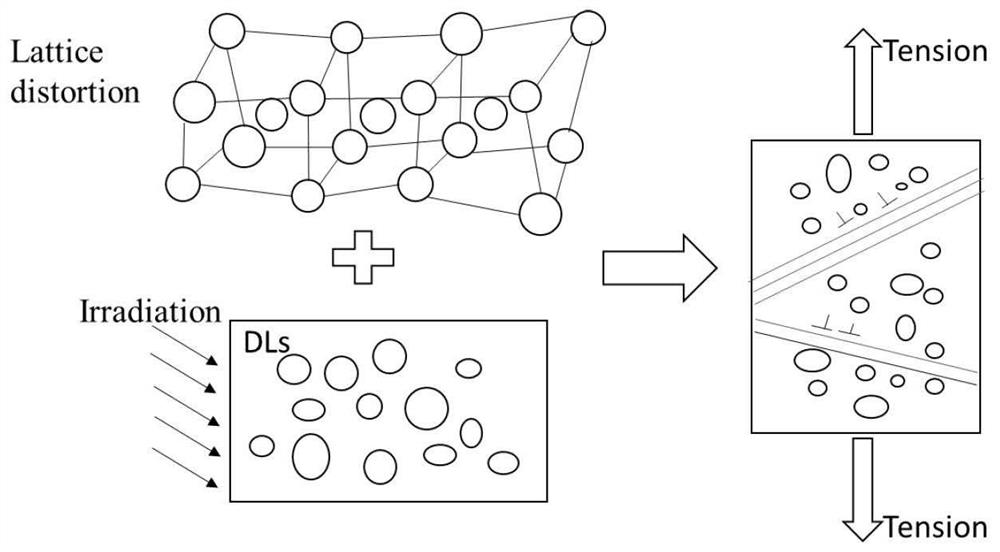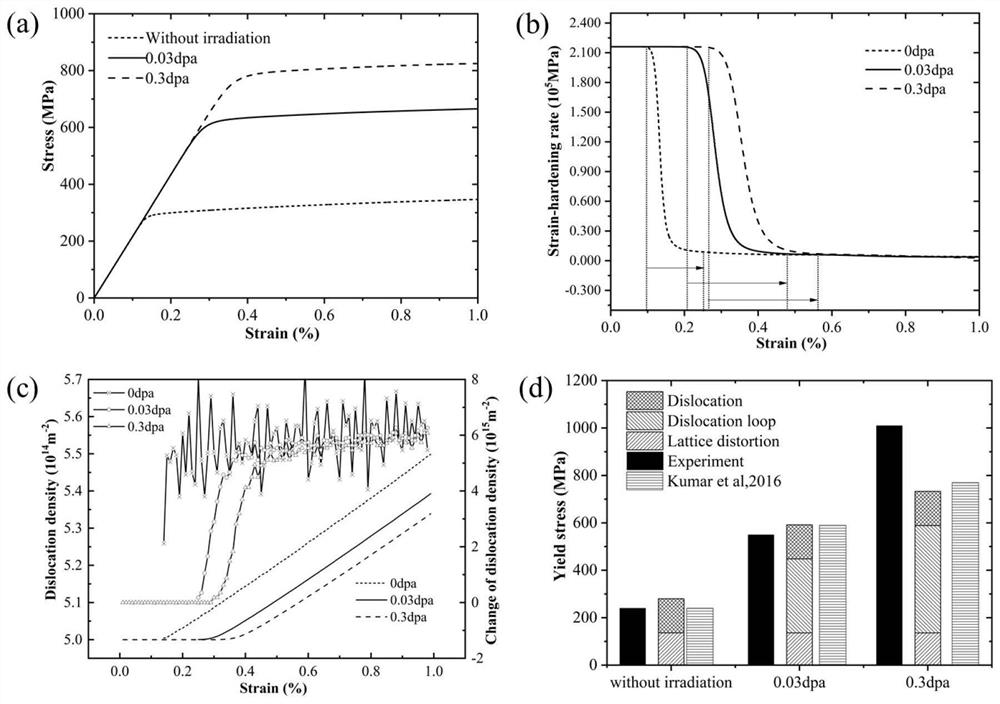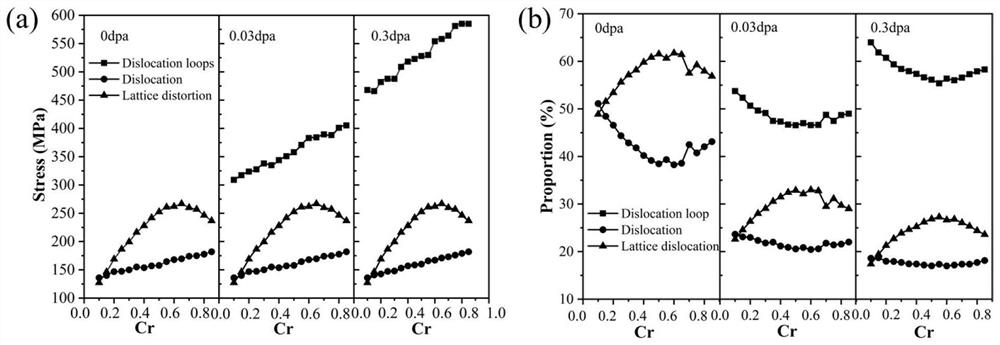Strength prediction method of high-entropy alloys with defect structure
A high-entropy alloy strength prediction technology, applied in prediction, instrumentation, data processing applications, etc., can solve the problems that the theoretical model of high-entropy alloy microscopic defect strength has not been established, and the crystal plasticity theory has not been used in high-entropy alloys, etc., to achieve The effect of good application prospects
- Summary
- Abstract
- Description
- Claims
- Application Information
AI Technical Summary
Problems solved by technology
Method used
Image
Examples
Embodiment Construction
[0054] Attached to the following figure 1 A schematic diagram and a specific example of a high-entropy alloy containing dislocation loop defects considering three effects of dislocation, dislocation loop and lattice distortion are given, and its technical solution is further elaborated. The present invention is not limited to the following examples, All the design ideas utilizing the present invention fall into the protection scope of the present invention.
[0055] Dislocations are mainly caused by the processing, preparation and service of materials, and are used as a characterization of plastic deformation of materials. Considering the main defect dislocation loops generated by FeNiMnCr high-entropy alloys during service, they are the main source of material hardening; lattice distortion is high entropy. The inherent characteristics of the alloy due to the mismatch of size and modulus of the constituent elements have a strengthening effect on the mechanical properties of t...
PUM
| Property | Measurement | Unit |
|---|---|---|
| radius | aaaaa | aaaaa |
| shear modulus | aaaaa | aaaaa |
| radius | aaaaa | aaaaa |
Abstract
Description
Claims
Application Information
 Login to View More
Login to View More - R&D
- Intellectual Property
- Life Sciences
- Materials
- Tech Scout
- Unparalleled Data Quality
- Higher Quality Content
- 60% Fewer Hallucinations
Browse by: Latest US Patents, China's latest patents, Technical Efficacy Thesaurus, Application Domain, Technology Topic, Popular Technical Reports.
© 2025 PatSnap. All rights reserved.Legal|Privacy policy|Modern Slavery Act Transparency Statement|Sitemap|About US| Contact US: help@patsnap.com



